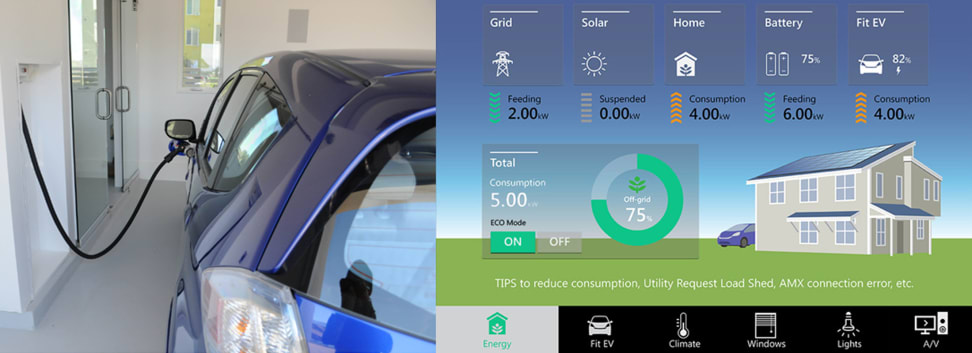Honda's New Smart Home Generates More Electricity Than It Consumes
...and it can even power an electric Honda Fit with renewable energy.
 Credit:
Credit:
Products are chosen independently by our editors. Purchases made through our links may earn us a commission.
Honda has built a demonstration smart home in California that promises to generate more energy than its occupants will use.
The Honda Smart Home U.S. is a 1,944-square-foot home that uses renewable energy sources, sustainable building materials, and innovative construction techniques. Where the average home consumes 13.3 megawatt hours of electricity each year, the Honda Smart Home sends 2.6 megawatt hours back to the grid.
That difference is largely due to a 9.5 kW solar array on the roof. The home's occupants are unlikely to use that much energy, so it can send power to a 10 kWh lithium-ion battery for storage. That way, the home's electronics can still sip from the stored solar power when night falls.
Some of the solar power goes directly to a Honda Fit EV electric vehicle, which comes with the house. In fact, it can charge from solar power in just two hours.
For this project, however, the car is taking a backseat to the holistic smart home energy management system that Honda developed.
"We are focused on more than just mobility," said Michael Koenig, project leader. "As a society, we really need to look beyond just vehicles."
Indeed, only about a third of an average household's carbon footprint is due to vehicle use. The Honda Smart Home aims to cut not only that, but the additional third that comes from lighting, heating, and air conditioning.
For instance, a geothermal heat pump provides hot water, heating and cooling for the Smart Home. Shutters and vents open and close automatically for passive heating and cooling, and all hot water pipes are designed to travel the shortest possible distance to keep heat loss to a minimum. A smart energy management system lets homeowners monitor how much energy is in use.
Koenig calls the Smart Home the "house of the near future," and stresses that 90 percent of the technology involved in building the home is off-the-shelf and available today. For example, cork is used for insulation, and builders users a special low-carbon concrete. Filtered waste water is used for irrigation.
Still, many homeowners may not be familiar with those products and concepts.
"They're not quite in the mainstream conversations people are having when they're building their homes or remodeling their homes," Koenig said.
The house is located in the UC Davis West Village, a planned community of zero-net-carbon-emission homes outside of the college campus. A university faculty or staff member will live in the home for three years, during which time Honda will collect data on how well it performs. That data will then be published for academic researchers and utility companies to analyze.
